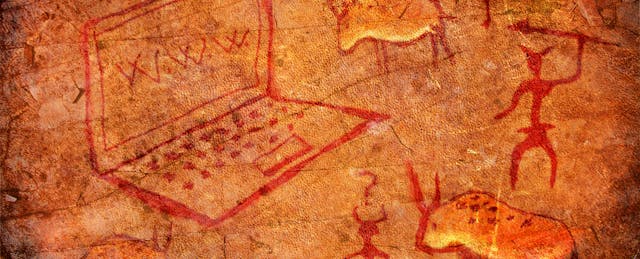The futility of a liberal-arts degree was drilled into me early on. Surrounded by friends and family who touted how their children were on their way to becoming doctors and engineers, my parents often struggled to explain why their son picked history.
“Well, maybe you can be a lawyer,” their friends would say. (I had, and still have, no intention.)
I am forever grateful that they never tried to steer me away. Yet other parents and adults may not be so understanding, especially in an age when computer science and STEM professions have been put on a pedestal—sometimes at the expense of the humanities.
That misguided notion—that STEM is the only path to a job with livable wages—frames the latest book by George Anders, “You Can Do Anything.” It reads, at times, like a humanist’s rallying cry against those who mock their discipline. Quoting public leaders such as Jeb Bush, the opening chapter underscores how much the liberal arts have been lampooned—and dissed. “Hey, that psych major deal, that philosophy major thing, that’s great, it’s important to have liberal arts...but realize, you’re going to be working at Chick-fil-A,” Florida’s former governor once said.
Yet as Anders chronicles through a flurry of profiles—from recruiters and researchers to tech titans and Tim O’Reilly—underestimating the liberal arts is folly, especially in an age when “everything is in flux and nobody’s model works perfectly.” Despite lightspeed advances in algorithms and artificial intelligence, humans still make decisions based on gut instincts and intuition, regardless how convincing the data may be. (Michael Lewis’ latest work, “The Undoing Project,” illustrates this in detail.)
Against the backdrop of dystopian narratives around the impact of automation on jobs, the book cheers on humanity’s refusal to give in. Despite technology’s darndest attempts, what can’t be automated is curiosity and empathy, Anders argues. These traits can be developed in any class or major, and nurtured through travel, hobbies and odd jobs whose dots are often hard to connect.
Most characters in Anders’ book have found professional success as “nontechnical emissaries,” his term for those who bridge technologists and customers to create better experiences and products. Ethnographers fulfill their passion—and wallets—pursuing careers in user experience and design. Psychology students become top-performing recruiters for Silicon Valley’s biggest companies. English majors win industry awards for creating snappy social media campaigns. A dramaturgy major (yes, look that up) is the voice behind Slack’s sassy digital assistant bot.
Littered throughout the book are vignettes about how tenacious young adults tactfully leveraged something learned from an arts or history class to help companies solve problems. The importance of storytelling abilities is a recurring theme. Even the wonkiest of technical endeavors—take blockchain, for instance—requires a humanist’s touch to be relatable to everyday life, to help others appreciate and realize the potential of otherwise abstract ideas. Martin Heidegger and Henry David Thoreau may applaud (or be appalled) at the inventive ways their works are being applied in the 21st century tech job market.
High-tech firms and startups feature prominently as career opportunities in Anders’ work, but he takes note to cover other industries as well (if not as deeply). These sections are replete with tips on selling one’s liberal arts skills to accounting firms, hedge funds, investment research groups, strategy consultants and—yes—even the government. It’s an exhaustive list that leaves one thinking: Is there any field where the liberal arts are not applicable?
There are also tips for how colleges can resuscitate career services and alumni networks. These resources have always existed but, for whatever reason, are appallingly underutilized. Roughly half of graduating seniors have had a direct interaction with alumni or checked out their career centers. Yet not all colleges are asleep at the wheel. Wake Forest woke up and now offers academic credit for career-oriented classes. The University of Wisconsin–Madison trains students to deliver compelling “elevator speeches.”
At times, the book veers close to over-extolling the value of wanderlust and wandering. “It’s time to help meandering regain its good name,” Anders exhorts. The frustrations and despair of the journey can seem oversimplified, even romanticized (at least to this liberal arts major).
Many of the dabblers profiled in the book come from the likes of Bard and Reed—not exactly the kinds of schools that are very accessible or affordable. Tapping into social capital and alumni connections also presumes that one has attended and finished college, which is not always the case with rising tuition and debt crimping such opportunities. (What about those who sidestep the college option?)
Still, Anders’ work should remind students, parents, educators and employers that the path from one point to another is rarely a straight line, regardless of what one studies. His work is joined by other defenders of the liberal arts. At least two other books on the topic have been published this year, including Randall Stross’ “A Practical Education” and Scott Harley’s “The Fuzzy and the Techie.” That’s a welcome sign. For an ambiguous discipline that all too often retreats into obscurity (sometimes willingly), the liberal arts must muster all the support it can get.


